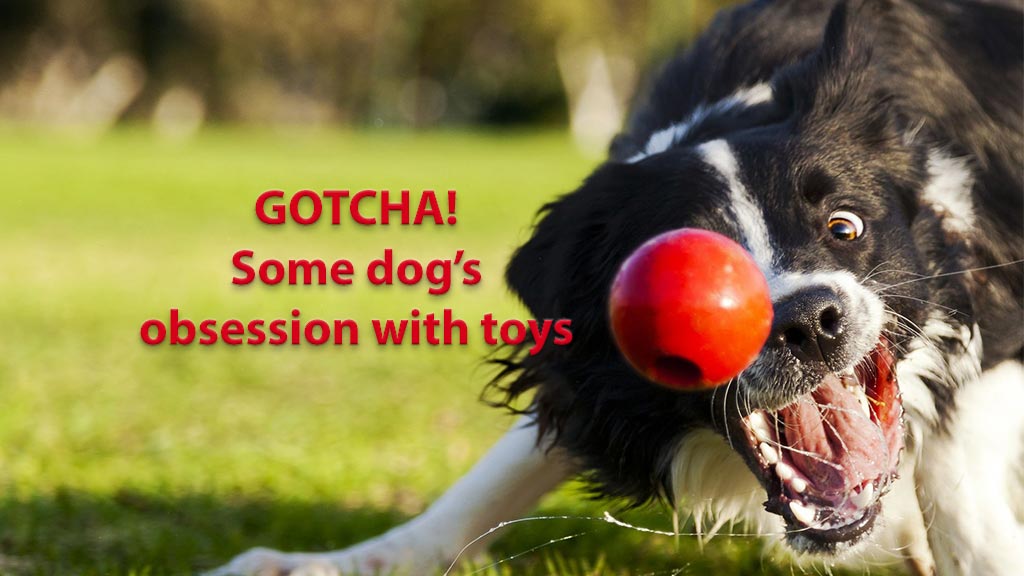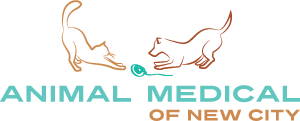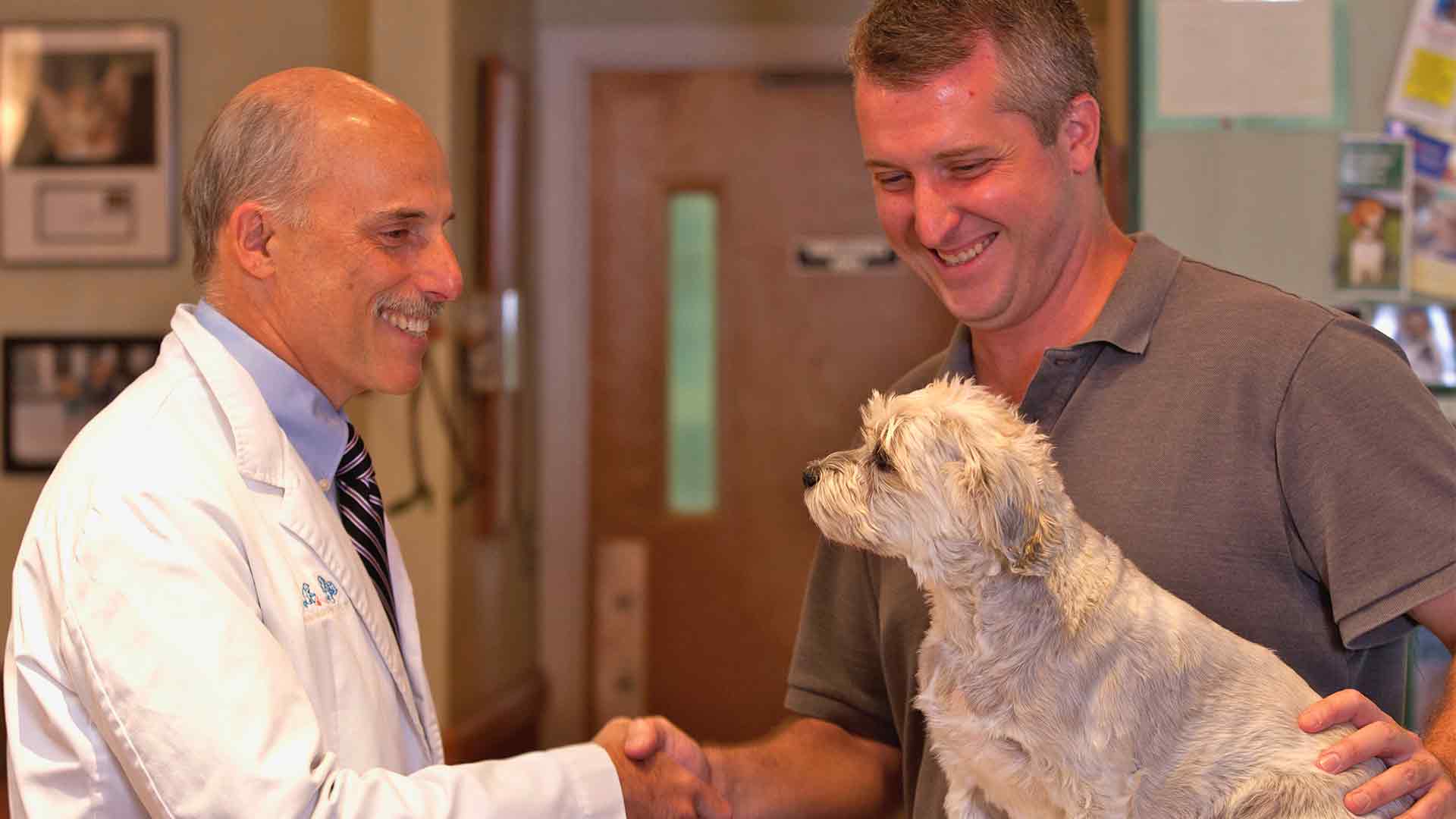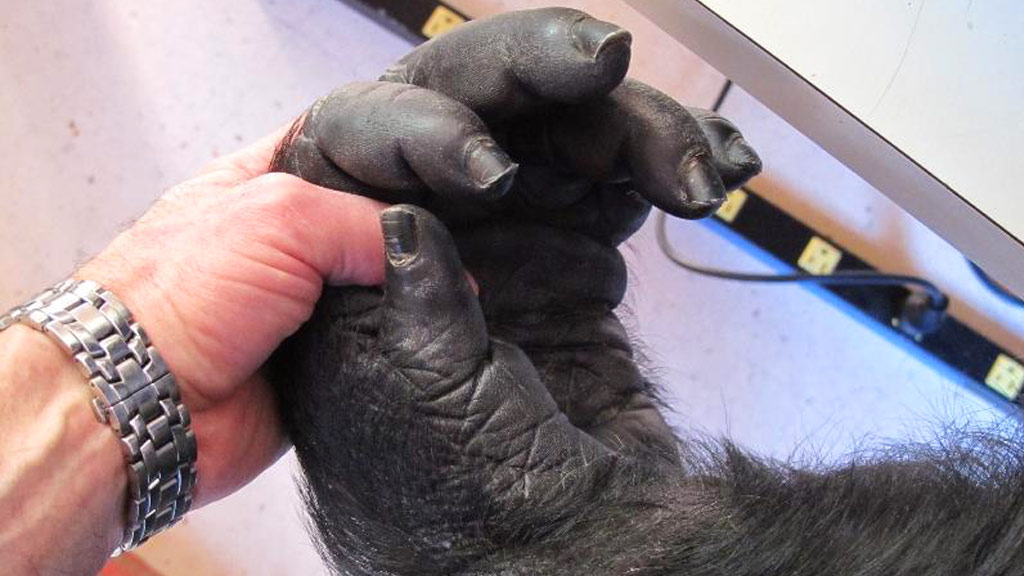
Does your dog have a favorite toy? Does your dog mother her toy? Carry it around everywhere? Destroy it? Here’s a look at what’s going on with your toy obsessed dog and some guidelines on selecting a toy for your pet.
The Toy Obsessed Dog
Over the years, Animal Medical of New City clients have told us about dogs that carry their toys wherever they go, guard their toys, grab their toys as soon as they see their owner, hide their toys, bury their toys, destroy their toys, and mother their toys. Depending on the behavior, there could be a number of things going on.
Free Phone Consultation!
Need to talk to you one of our veterinary professionals?
Animal Medical offers FREE 10 minute phone consultations and answers your pet health questions!
MORE
We Give Our Dogs’ Toys Meaning
If your Retriever grabs his toy as soon as you walk in the door or as soon as a guest arrives to your home, he has probably been passively trained to do so. The lesson was easy to learn: dog brought toy to human, human played tug of war with dog or threw toy, dog had fun, dog learned to repeat.
Similarly, you may have filled a Kong or other puzzle toy with peanut butter before you left for the day. The dog learned to associate the Kong toy with a tasty treat, or quiet, comforting time alone.
The Toy Is A Substitute Puppy
Mothering is a strong instinct in many female dogs regardless if they have been spayed or not. Some dogs, especially females (but males will also exhibit the behavior from time-to-time), play-act mothering with their toys. The toy satisfies a deep instinct to nurture and protect.
Chewing On A Toy Is Calming
Chewing helps your dog to relax and in the case of puppies, chewing can relieve the pain associated with teething and helps them explore the world around them. If a toy has your scent on it, it may be especially calming to your dog because he feels that a ‘member of his pack’ is with him.
The Toy is Prey
Dogs that have been bred for hunting or retrieving are driven by an instinct to hunt and even kill. For these dogs, toys are a substitute for prey that they would otherwise be stalking, killing or retrieving. The toys also help them to learn and practice these skills. If your dog is prone to shredding or destroying toys, choose the toy wisely. Over the years, Dr. Howard Gittelman has removed dozens of toys, toy parts, and other household items that have been swallowed by dogs and cats. He was even part of the team that removed a toy part from Koko the gorilla!
The Squeak In The Toy Sounds Like Prey
As awful as it sounds, squeaky toys sound like the cry of prey after it has been nabbed by the predator. That squeaky toy looks and sounds cute to you, but your dog may imagine that he has a baby rabbit in his mouth! Be vigilant with squeaky toys. Many dogs are driven to find the source of the sound and will shred the toy in search of it and then eat the parts.
Should I Be Concerned That My Pet is Obsessed With His Toys?
It’s a hard call to make. In almost all cases, your dog just really likes his toy or the play time that he associates with it. Certainly if your dog is snapping at you or other dogs if you try to take the toy away or if your pet continues to search for the toy long after playtime is over, you should consult one of our doctors on what to do. Remember that some breeds have been bred for generations for traits like hunting or herding. These breeds are especially eager to seek out prey, kill it, or round it up. Your dog’s obsessive behavior may really just be a sign that he needs a better way to blow off all his excess energy.
Be Careful When Selecting A Toy For Your Dog
We don’t want to be alarmist, but over the years, we’ve removed dozens of toys and toy parts from dogs’ stomachs and intestines. In one case, a dog ingested toy parts on 4 separate occasions requiring 4 separate surgeries! Fortunately the dog made it through, but obviously it was terrible for everyone involved. When choosing a toy for your pet, we recommend following the Humane Society guidelines.
Choose The Right Size
Don’t pick a toy that your dog can fit entirely in his or her mouth, especially balls. Dogs have a habit of mouthing balls and one that is too small can lodge in your pet’s throat and suffocate him.
Pay Attention To Where The Toy Was Manufactured
Though buying American isn’t necessarily always safe, it’s far safer than buying toys that were manufactured in countries where there are less regulations and oversight.
Take Notice Of What It Is Made Of
Your dog is going to have this thing in his or her mouth for a long time. Is it dyed? Will it splinter? When selecting a pet toy, choose American where tighter regulations control the paint, dye and other products that go into it. Only select toys that are labeled safe for children under 3. Please steer clear of all raw hide and dried animal-part chews like pig’s ears or bully sticks that were are manufactured in America. If you want to give your dog a raw hide chew (they are terrific at helping to clean dogs’ teeth), we recommend Virbac HEXtra chews. Dogs love them, they’re safe, and they contain an enzyme that limits the production of plaque.
Look At What’s Sewn Onto Or Attached To It
Steer clear of toys with fake eyes or things sewn onto it like beads or sparkles all of which can be chewed off and swallowed.
Find Out What It’s Filled With
Avoid toys that are filled with nutshells or polystyrene beads. Remember that many dogs end up destroying their toy and ingesting what’s inside leading to tummy upset or worse, obstruction. Monitor your pet’s toy. When it starts to fall apart, throw it out.
Does My Pet’s Obsession With His Toy Mean That He Can Love?
Studies show that dogs get more out of us than just room and board. They appreciate our love and love us in return. In one study, dogs were allowed to interact with a favorite human or animal and then levels of the animal’s oxytocin (a hormone that is released in higher amounts in humans when we interact with someone that we love) were measured. In all cases, the dog’s oxytocin levels were significantly higher after the pet interacted with a person or another animal that he or she cared about versus a stranger. In another study, animals were either praised or fed while their brain activity was monitored. Brain activity was higher in the area of the brain that we typically associate with loving feelings when the pet was praised than it was when the pet was given a food treat.
Isn’t it nice to know that you are more to your dog than just the person the fills the food bowl?







